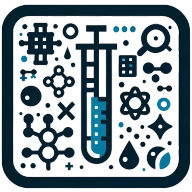6 Random Drug Testing Vs. for-Cause Testing: Which is Better?
Workplace drug testing policies can significantly impact employee morale and company culture. While random drug testing has been a common practice, for-cause testing is gaining popularity as an alternative approach. This article explores the pros and cons of both methods, helping employers make informed decisions about their drug testing strategies.
- For-Cause Testing Builds Trust and Safety
- Targeted Approach Reduces False Positives
- Random Testing Deters Substance Abuse
- For-Cause Policy Improves Employee Morale
- Random Tests Ensure Comprehensive Coverage
- For-Cause Testing Offers Cost-Effective Solution
For-Cause Testing Builds Trust and Safety
I believe for-cause testing is generally more effective and fair than random drug testing in the workplace. Random testing can create distrust among employees and sometimes feel punitive without clear justification. For-cause testing, triggered by observable behavior or safety concerns, targets situations where there's a genuine risk, making it more respectful of privacy while maintaining safety.
For example, at a previous company, we implemented for-cause testing after a few incidents where impaired performance was evident. This approach helped us address problems directly without alienating the broader team. It encouraged employees to seek help proactively, knowing the policy was about safety and support, not surveillance.
In my view, focusing on clear indicators rather than random checks builds a healthier workplace culture and fosters better cooperation and accountability.

Targeted Approach Reduces False Positives
For-cause drug testing is a more targeted approach that can reduce the occurrence of false positives in the workplace. This method focuses on testing employees when there is a reasonable suspicion of drug use, which can lead to more accurate results. By implementing for-cause testing, companies can minimize legal risks associated with wrongful accusations or privacy violations. This approach also demonstrates a level of trust in employees, as it doesn't subject them to random screenings without cause.
Employers should consider the benefits of for-cause testing in maintaining a fair and respectful work environment. It's important to weigh the pros and cons of different drug testing methods to find the best fit for your organization. Take the time to review your current drug testing policies and consider if for-cause testing aligns with your company's values and goals.
Random Testing Deters Substance Abuse
Random drug testing can be an effective deterrent against substance abuse in the workplace. This method creates an atmosphere where employees are aware that they may be tested at any time, potentially discouraging drug use both on and off the job. The unpredictable nature of random testing can lead to a more consistent state of readiness among the workforce. This approach may be particularly beneficial in industries where safety is a critical concern, such as transportation or manufacturing.
Random testing can also help identify substance abuse problems that might otherwise go unnoticed. However, it's essential to balance the potential benefits with concerns about employee privacy and morale. Consider consulting with legal experts and employee representatives to develop a fair and effective random drug testing policy that prioritizes workplace safety while respecting individual rights.
For-Cause Policy Improves Employee Morale
For-cause drug testing can foster a sense of trust and improve employee morale within an organization. This approach demonstrates that the company respects its employees' privacy and only conducts tests when there is a legitimate reason to do so. By avoiding unnecessary random tests, employers can create a more positive work environment where employees feel valued and trusted. For-cause testing also allows companies to address specific concerns or incidents promptly, rather than relying on chance detection through random screening.
This targeted approach can lead to more efficient use of resources and potentially faster resolution of workplace issues. It's important for companies to clearly communicate their for-cause testing policies to all employees, ensuring transparency and understanding. Take the initiative to develop comprehensive guidelines for identifying and addressing situations that warrant for-cause testing, promoting a fair and consistent application of the policy.
Random Tests Ensure Comprehensive Coverage
Random drug testing provides comprehensive coverage for ensuring workplace safety across all levels of an organization. This method allows for the detection of substance abuse issues that might not be immediately apparent through observation or performance indicators. By testing employees at all levels and departments equally, random testing can help maintain a fair and unbiased approach to workplace drug prevention. This comprehensive coverage can be particularly valuable in industries with high-risk operations or those subject to strict regulatory requirements.
Random testing may also identify patterns of substance abuse that could inform company-wide prevention and education efforts. However, it's crucial to implement random testing in a way that doesn't erode employee trust or create an overly punitive atmosphere. Consider partnering with employee assistance programs to provide support and resources for those who may be struggling with substance abuse issues identified through random testing.
For-Cause Testing Offers Cost-Effective Solution
For-cause drug testing can be a more cost-effective approach for businesses compared to random testing programs. This method allows companies to allocate their resources more efficiently by conducting tests only when necessary, rather than testing a large number of employees regularly. The targeted nature of for-cause testing can lead to a higher rate of positive results, making the investment in testing more worthwhile. Additionally, this approach may reduce the administrative burden associated with managing a random testing program.
For-cause testing can also help minimize productivity losses that might occur due to frequent random testing interruptions. However, it's important to note that the cost-effectiveness of for-cause testing relies on proper implementation and clear guidelines for identifying when testing is warranted. Take the time to analyze your company's specific needs and calculate the potential cost savings of switching to a for-cause testing approach. Consider consulting with HR professionals and legal experts to ensure your drug testing policy is both cost-effective and compliant with relevant regulations.

